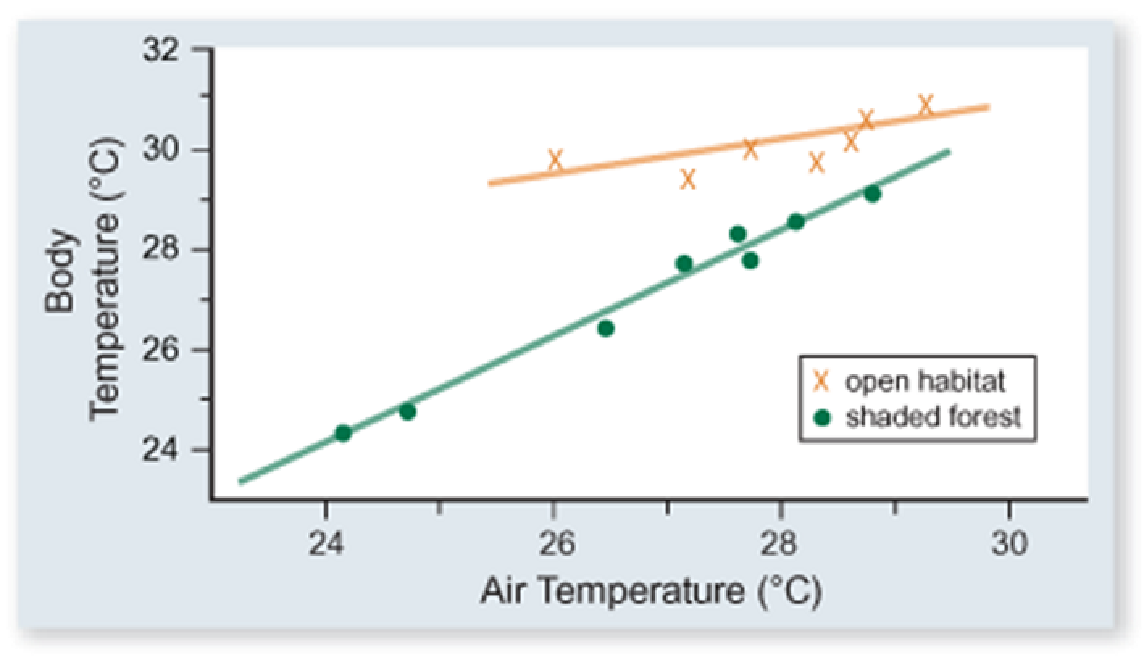The maximum amount of air that can be moved into and out of the lungs during forceful breathing is called ________
A) vital capacity B) total lung capacity C) tidal volume D) residual volume
Answer: A
You might also like to view...
The movement of chemicals through ecosystems is known as
A. gross primary production. B. biogeochemical cycles. C. community ecology. D. net primary production. E. biomagnification.
The figure included shows the body temperature of lizards versus air temperature in two different habitats—open and shaded forest. Which one of the following conclusions is best supported by these data.

A. Lizards are more active in open habitats.
B. Lizards sunbathe more in open habitats.
C. Lizards in shaded forest habitats eat more to maintain their temperature.
D. The body temperature of lizards is more constant in open than in shaded forest habitats.
E. The negative effect of air temperature on body temperature is less in shaded forest habitats because the temperature varies less there.
West Nile virus or herpes virus infection can lead to the dangerous condition of ____
a. epilepsy b. paralysis c. encephalitis d. meningitis e. multiple sclerosis
DNA rearrangements in eukaryotes can
A) cause chromosome puffs. B) enhance production of the certain gene products. C) increase the diversity of possible gene products from a limited number of genes. D) allow for epigenetic regulation. E) enhance production of the certain gene products and increase the diversity of possible gene products from a limited number of genes.